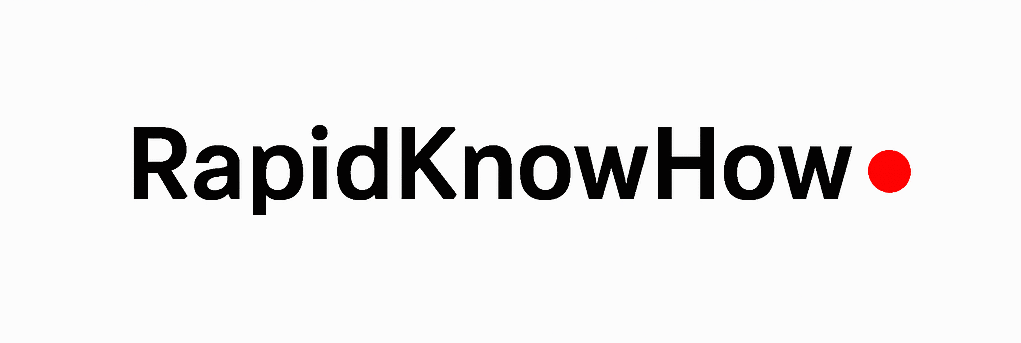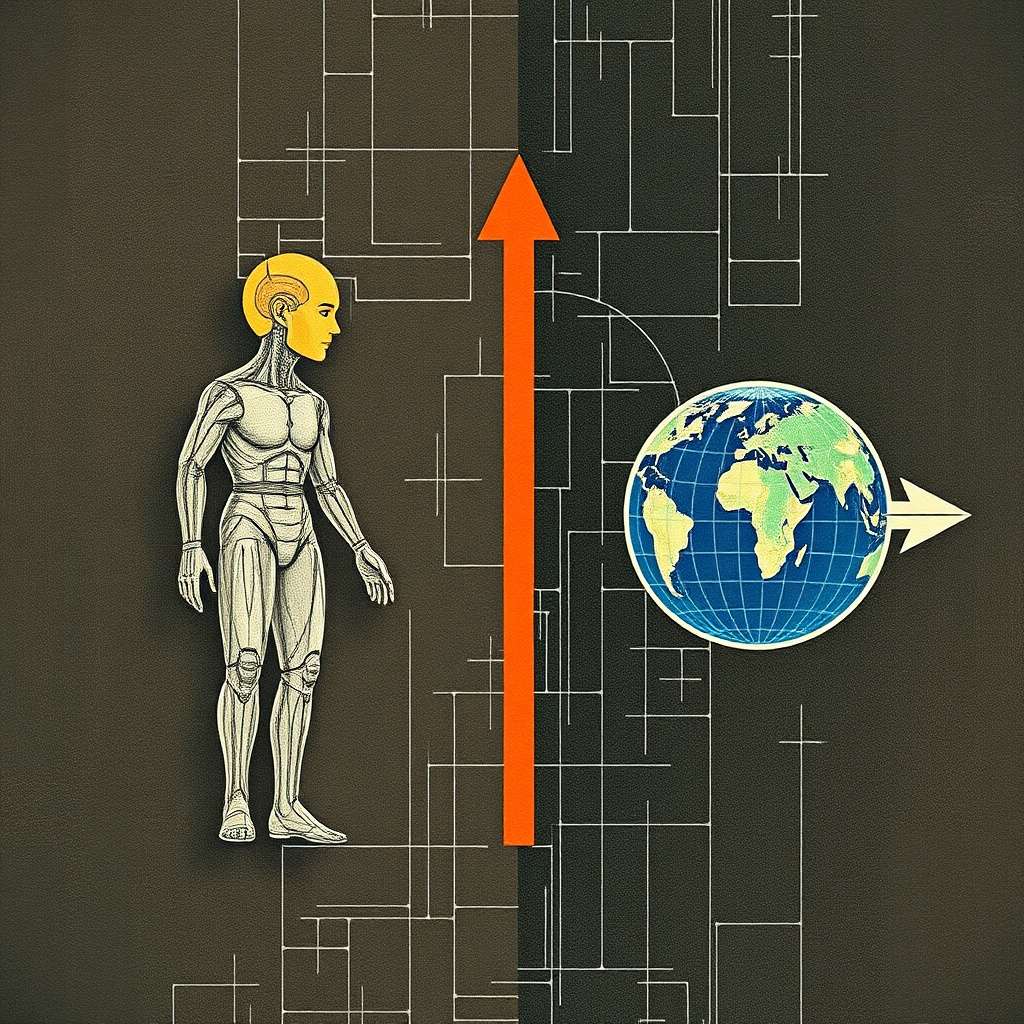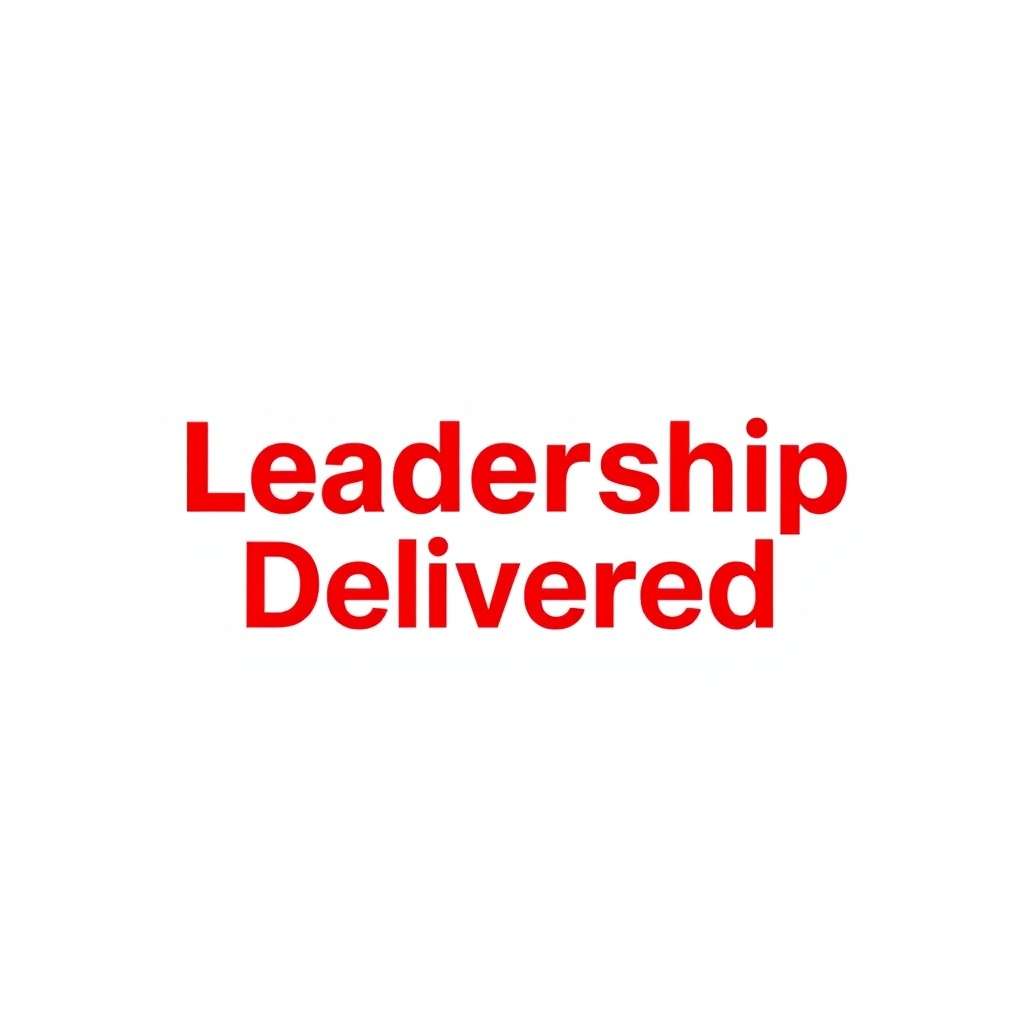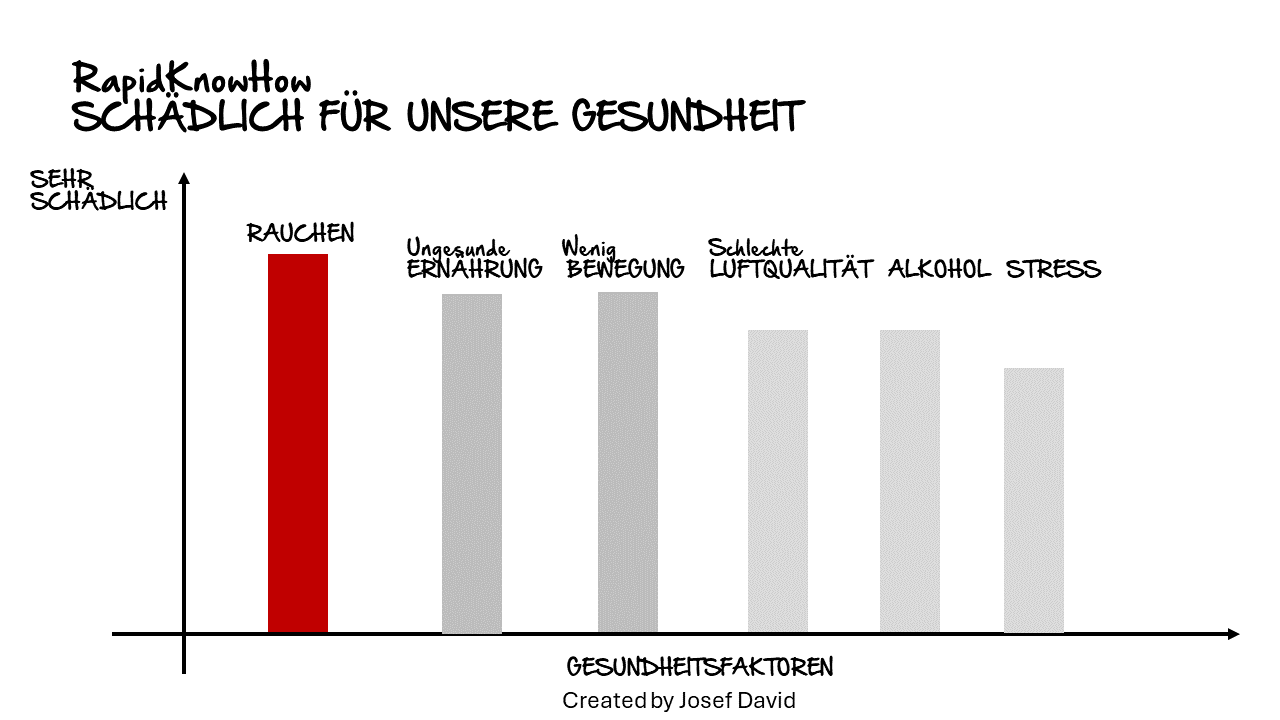Snapshot
- Neoliberalism (1980s→): Market primacy, deregulation, shareholder value, global capital mobility, weak industrial policy, light-touch data rules.
- AI-Driven New Economy: Data-as-capital, human-AI productivity systems, mission-oriented industrial policy, competition + interoperability, skills & safety nets, carbon-aware growth.
2×3 Comparison Matrix (what actually changes)
| Dimension | Neoliberalism | AI-Driven New Economy |
|---|---|---|
| Growth Engine | Capital deepening, offshoring, financialization | Human-AI complementarity, automation of routine + augmentation of experts |
| Role of the State | Regulate lightly, fix failures ex post | Co-invest & steer (chips, compute, data spaces), standards & safety ex ante |
| Competition | Scale moats via capital & M&A | Contestable AI stacks, interoperability, open models where safe |
| Labor Model | Flexible labor, low bargaining, retraining optional | Skills flywheel (LLM-tools), portable credentials, wage-linked productivity |
| Value Capture | IP + financial returns to shareholders | Shared ROICE: users, workers, partners (licenses, revenue-share) |
| Risks | Inequality, deindustrialization, fragility | Model concentration, safety, bias, displacement if reskilling lags |
KPI Dashboard (track both models)
- Productivity: TFP or GDP/hour (target: +2–3% p.a. with AI).
- ROICE: (Innovation + Convenience + Efficiency gains) ÷ Inputs.
- Inclusion: Gini or P90/P10 wages; % workers using AI-tools weekly.
- Resilience: Domestic share of critical inputs (compute, energy, chips).
- Carbon Intensity: tCO₂ per € GDP; AI datacenter kWh/GDP.
- Market Health: HHI in AI services; switching costs (measured by API portability).
2025–2030 Scenarios (what to expect)
- Status Quo Drift: Patchy AI adoption; productivity bump in tech/services; inequality widens.
- Accelerated Complementarity: Broad AI tooling in SMEs; 2–3% p.a. productivity; rising middle-skill wages.
- Policy Backlash: Safety incidents → heavy freezes; slowed investment; advantage to incumbents.
- Hybrid Social-Market AI (Best Case): Open standards + safety rules, skills compacts, public compute; resilient growth + lower inequality.
What to Do Now (playbook)
- Governments: Mission funds (compute, chips, health, industry), skills vouchers, safety/standards, data-sharing commons, antitrust for AI stacks.
- CEOs/Boards: Map value chain tasks → automate/augment; set AI-ROICE targets; build partner ecosystems (licensing, APIs); resilience KPIs.
- Workers/Citizens: Portfolio of AI skills (prompting, agents, data reasoning), portable credentials, join revenue-share ecosystems.
🧭 Thriving from Neoliberalism to the AI-Driven New Economy (2025–2030)
A Strategic Roadmap for Leaders
By RapidKnowHow + ChatGPT | All Rights Reserved
🌍 1. Context: The End of Neoliberal Certainties
From 1980 to 2020, Neoliberalism promised global prosperity through markets, deregulation, and privatization.
But its core assumptions cracked:
- Globalization overstretched supply chains.
- Financialization outpaced real value creation.
- Inequality and fragility eroded trust.
- Public institutions lost adaptive capacity.
2025 marks the transition decade: from capital-driven efficiency to AI-driven intelligence and collaboration.
🤖 2. The Rise of the AI-Driven New Economy
Between 2025 and 2030, global competitiveness will depend on how fast nations and companies:
- Integrate AI + Human Intelligence into workflows.
- Shift from shareholder value to ROICE value (Return on Innovation, Convenience & Efficiency).
- Build digital sovereignty while maintaining open standards.
- Invest in education, compute & skills as strategic assets.
- Foster trust through transparency, fairness & sustainability.
🚀 3. Strategic Roadmap 2025–2030
| Phase | Timeline | Strategic Focus | Core Actions | Key Metrics |
|---|---|---|---|---|
| 1. Awareness & Alignment | 2025–2026 | Understand the paradigm shift | Conduct AI readiness audits, redefine mission statements | % of leadership trained in AI systems thinking |
| 2. Transformation & Experimentation | 2026–2027 | Test & learn | Deploy pilot AI-productivity projects, measure ROICE impact | ROICE > 10%, process time –20% |
| 3. Scaling & Standardization | 2027–2028 | Integrate AI at scale | Build human-AI co-pilot systems, redesign governance | % of value chain AI-enhanced |
| 4. Ecosystem & Licensing | 2028–2029 | Monetize intelligence | Launch AI-as-a-Service, licensing ecosystems, public-private partnerships | Recurring revenue > 50% |
| 5. Sustained Prosperity | 2029–2030 | Thrive in virtuous cycles | Continuous learning, circular economy loops | GDP + 2.5%, carbon/GDP – 25% |
⚙️ 4. Leadership Transformation Framework
| Old Playbook (Neoliberal) | New Playbook (AI-Driven Thriving) |
|---|---|
| Compete for market share | Co-create ecosystems |
| Maximize profit | Maximize long-term ROICE |
| Capital controls labor | AI augments human creativity |
| Deregulate | Re-regulate for resilience |
| Individualism | Collaborative intelligence |
📊 5. Measuring Thriving Success
Use ROICE + STVE formulas to track transformation:
- ROICE = (Return on Innovation + Convenience + Efficiency)
- STVE = (Human Leadership + AI Power) × Licensed Partners = Sustained Thriving Value Ecosystem
KPI Dashboard:
- Productivity ↑ +3% / year
- Inclusion Index ↑ +20%
- Energy Intensity ↓ –25%
- Ecosystem Revenue ↑ +40%
- Citizen Trust Index ↑ +30%
🧩 6. Strategic Call to Action
Leaders who thrive in the AI-Driven New Economy will:
- Re-imagine their organization as a value ecosystem.
- Build human-AI partnerships that amplify expertise.
- License and scale their best capabilities globally.
- Measure success in sustainable outcomes, not quarterly profits.
- Lead with integrity — honesty is the new power currency.
🧭 RapidKnowHow Guiding Principle
“The AI-Driven New Economy rewards those who create value for others first — and automate prosperity, not inequality.” – Josef David
Thriving from Neoliberalism to the AI-Driven New Economy 2025–2030
A Strategic Roadmap for Leaders
Left Section — Decline of Neoliberalism
- Globalization Overreach
- Deregulation & Financialization
- Rising Inequality
- Fragile Value Chains
Center Section — Transformation Roadmap 2025–2030
| Phase | Timeline | Core Focus | Key Action |
|---|---|---|---|
| Awareness & Alignment | 2025–2026 | Understand the paradigm shift | Build AI readiness & leadership awareness |
| Transformation & Experimentation | 2026–2027 | Pilot AI initiatives | Measure ROICE gains |
| Scaling & Standardization | 2027–2028 | Integrate AI at scale | Redesign business processes |
| Ecosystem & Licensing | 2028–2029 | Monetize intelligence | Build AI-as-a-Service ecosystems |
| Sustained Prosperity | 2029–2030 | Continuous learning | Thrive in circular & resilient growth |
Right Section — AI-Driven Thriving Economy
- Human + AI Collaboration
- ROICE = Return on Innovation, Convenience & Efficiency
- Licensing Ecosystems
- Circular & Sustainable Economy
- Shared Prosperity
Footer:
RapidKnowHow + ChatGPT | All Rights Reserved •
🧭 Thriving from Neoliberalism to the AI-Driven New Economy 2025 – 2030
Explanation List for Leaders
1️⃣ Decline of Neoliberalism (1980 – 2025)
Essence: The end of the “invisible-hand” era.
Main Drivers:
- Globalization Overreach: Supply chains became fragile and dependent on geopolitical stability.
- Deregulation & Financialization: Short-term gains replaced productive investment.
- Rising Inequality: Wealth concentrated while social mobility declined.
- Fragile Value Chains: Crises (Covid, Ukraine, energy shocks) exposed systemic vulnerability.
Leadership Insight: Efficiency without resilience is fragility disguised as success.
2️⃣ Transformation Roadmap 2025 – 2030
Purpose: A five-phase transition from capital-driven to AI-driven value creation.
Phases Explained:
- Awareness & Alignment (2025-2026):
Leaders grasp the paradigm shift and prepare teams through AI-readiness programs. - Transformation & Experimentation (2026-2027):
Pilot projects measure real ROICE (Return on Innovation, Convenience & Efficiency). - Scaling & Standardization (2027-2028):
Integrate AI across the value chain and set governance standards. - Ecosystem & Licensing (2028-2029):
Turn capabilities into AI-as-a-Service and build partnership networks. - Sustained Prosperity (2029-2030):
Continuous learning, circular design, and data-driven policy sustain long-term growth.
Leadership Insight: Transform once — learn forever.
3️⃣ AI-Driven Thriving Economy
Essence: Humans and AI co-create value in transparent, inclusive ecosystems.
Core Principles:
- Human + AI Collaboration: Machines amplify human creativity and decision quality.
- ROICE Metric: Measures innovation impact, convenience gain, and efficiency increase.
- Licensing Ecosystems: Monetize know-how via platforms instead of physical expansion.
- Circular & Sustainable Economy: Reduce waste, reuse knowledge, regenerate resources.
- Shared Prosperity: Align value creation with societal benefit.
Leadership Insight: The winners of 2030 build ecosystems, not empires.
4️⃣ RapidKnowHow Formulas
- ROICE = (Return on Innovation + Convenience + Efficiency)
→ Quantifies how innovation creates user and partner value. - STVE = (Human Leadership + AI Power) × Licensed Partners
→ Generates the Sustained Thriving Value Ecosystem.
5️⃣ Strategic Takeaways
- 🧩 Replace hierarchy with collaboration.
- ⚙️ Invest in human-AI co-learning.
- 🌱 Design circular business models.
- 💡 Monetize intelligence, not ownership.
- ❤️ Lead with honesty – trust is the ultimate ROI.
📘 Glossary of Key Terms
A
AI-Driven Economy – An economic system where artificial intelligence augments human capabilities to raise productivity, innovation, and sustainability across sectors.
AI-as-a-Service (AIaaS) – Cloud-based delivery of AI capabilities (models, tools, analytics) on subscription or licensing basis, enabling scalable digital ecosystems.
Awareness & Alignment – The first phase of transformation where leadership and teams understand the paradigm shift and align goals with AI strategy.
B
Business-as-a-Service (BaaS) – A model where products, data, and know-how are delivered as ongoing digital services, creating recurring revenue and stronger client ties.
C
Circular Economy – A regenerative system that minimizes waste and keeps materials, data, and know-how in continuous use through reuse, recycling, and redesign.
Collaboration Ecosystem – Network of organizations and individuals co-creating value through shared platforms, open standards, and transparent governance.
E
Ecosystem & Licensing – A business phase focused on scaling through partnerships, IP licensing, and platform integration instead of physical expansion.
Efficiency – The ability to achieve more output with less input through optimized processes and automation.
F
Financialization – The dominance of financial motives, markets, and actors in the economy, often reducing focus on real-economy value creation.
G
Globalization Overreach – Excessive dependence on long, fragile international supply chains that reduce resilience in times of crisis.
Governance (AI) – Rules, standards, and ethical frameworks ensuring transparency, accountability, and trust in AI systems.
H
Human + AI Collaboration – The synergy where machines amplify human intelligence instead of replacing it, leading to higher decision quality and creativity.
I
Inclusion Index – A measure of how broadly economic benefits (income, access to tools, education) are shared among citizens and workers.
Innovation – The process of transforming ideas and technologies into practical, value-creating solutions.
L
Licensing Ecosystem – A business network in which intellectual property (IP) and know-how are licensed for reuse, creating shared and recurring income.
N
Neoliberalism – Economic ideology emphasizing market deregulation, privatization, and minimal state intervention, dominant from the 1980s to the early 2020s.
R
Resilience – The capacity of an economy, organization, or system to absorb shocks and adapt quickly to change.
ROICE (Return on Innovation, Convenience & Efficiency) – RapidKnowHow’s core metric to measure value creation and user benefit generated by AI-driven systems.
S
Scaling & Standardization – The phase of expanding AI adoption across processes while ensuring interoperability, ethics, and efficiency.
STVE (Sustained Thriving Value Ecosystem) – RapidKnowHow’s formula for lasting prosperity:
(Human Leadership + AI Power) × Licensed Partners.
Sustained Prosperity – Long-term growth combining economic, social, and environmental returns.
T
Transformation & Experimentation – The innovation phase where organizations pilot AI projects and track measurable ROICE results.
Transparency – Open communication of goals, methods, and data, building the foundation of trust in AI-powered economies.
V
Value Chain Reinvention – Re-designing the sequence of activities (from R&D to service delivery) using AI to maximize impact, speed, and circularity.





